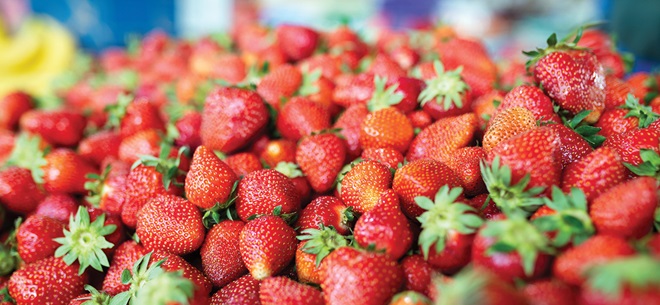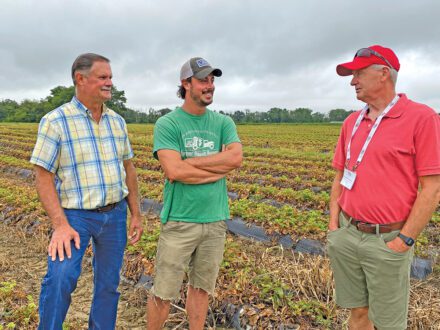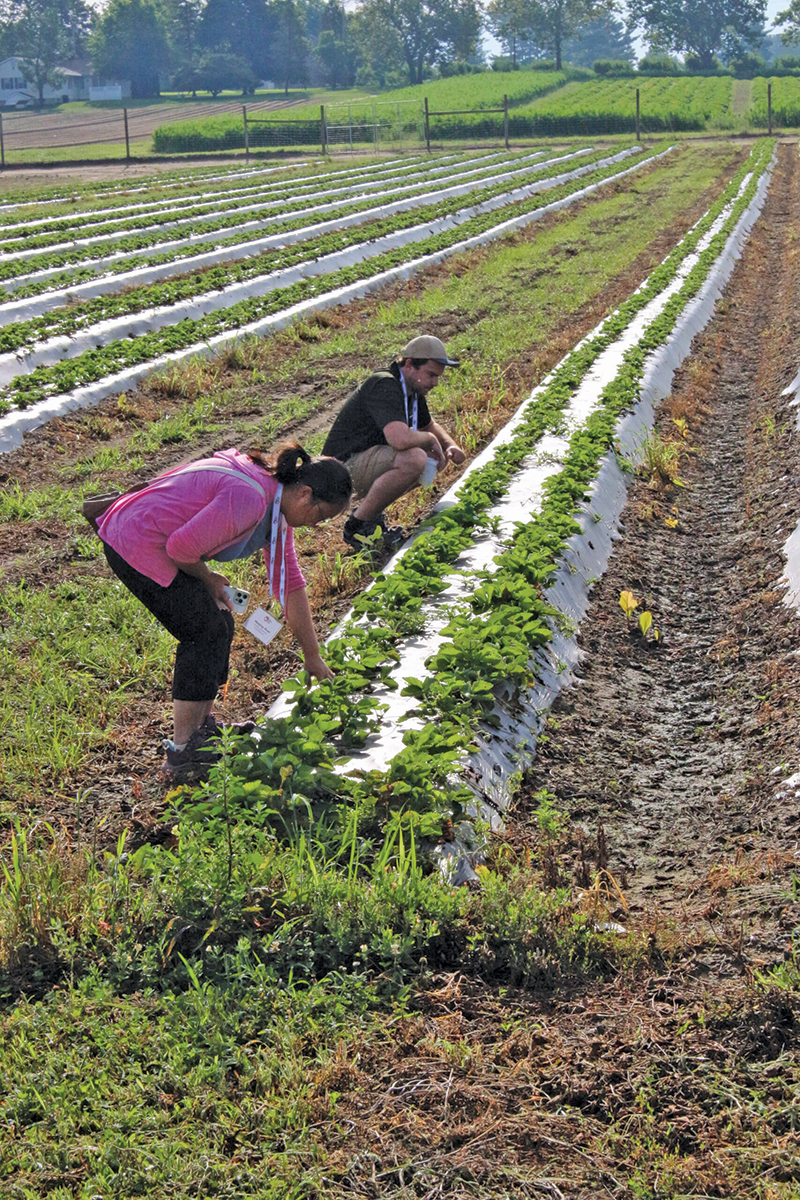

Dec 18, 2023New Jersey is a mecca for strawberry production
Strawberries set the pace as one of the first crops of the New Jersey growing season. Farm operators from a wide swath of the state shared their growing and marketing experiences during the North American Strawberry Growers Association 2023 Summer Tour.
The mid-August farm visits were about two months after the New Jersey spring season ended.
Specca Farms
Specca Farms in Springfield Township in Burlington County is run by Dave and Lisa Specca and their son Stephen.
Harvest of the spring crop begins in late April or early May and can continue through mid-June. Specca Farms grows three acres of Rutgers Scarlet, Chandler, Flavor Fest and Sweet Charlie strawberry varieties for primarily u-pick consumers.


The Specca family has been farming since the early 1900s and grows more than 100 varieties of vegetables throughout the season. The primary farm has 125 acres, which Dave and Lisa Specca purchased in 2011.
“I grew up on the farm my son now owns, which is across the street,” Dave Specca said. “Strawberries have been a big part of our mix.”
They primarily use a plasticulture system with floating row cover. Varieties like Sweet Charlie come in late April.
Specca said 2023 was a “phenomenal” year for production, with picking lasting about seven weeks. Rutgers D’Light is a variety customers have embraced. Due to lack of supply, the Speccas have rooted some of their own tips.
“If you get good, healthy tips and you have them under mist in the greenhouse, that’s usually about a 10-day period,” he said. “We wean them off the mist and you grow them as you would any transplant. This is the crop that will be going out in a couple weeks.”
The growers develop roots under a greenhouse mist in a 50-cell tray with a regular potting mix. Once the plants have started to root, they fertilize them with a 100-parts-per-million nitrogen blend.
“It’s 20-10-20 fertilizer base that the mist is on right now. The mist is on for five seconds every 15 minutes just to mist them lightly. We start to push them,” Dave Specca said. “When the mist starts to wind down, we put fertilizer mix in the plug to get the plants going and the plugs started.”
Specca said it’s important to ensure transplants are healthy.
“It makes all the difference in the crop as it’s maturing,” he said. “In the fall you really want to establish those plants to be very strong, good bushy plants in the field. That’s when they are setting a lot of their flowers for the spring.”
The berries are in production for two years. After the first season, they are mowed down to 2 inches in mid-July.
“Hopefully, it encourages new growth,” Stephen Specca said. “It takes out some of the older crowns. It mows down some of the weeds that are on the plastic. In addition, we use an herbicide between the plastic rows.”
The beds are on 5.5-foot centers, covered by a five-foot-wide sheet of black plastic.
“That’s how we get the two years of production,” Dave Specca said. “Using the high beds is a big advantage for us, especially in a wet season when they puddle up, you can see how having them on that high bed prevents the root diseases.”


Drip irrigation is routed in the fall during planting. They use irrigation below the plastic and sprinklers overhead to establish the plants and get them growing well.
“It can get pretty hot here when we’re planting, making it real tough with the black plastic if you don’t have overhead irrigation to keep the plants cooler and a little bit moist,” Dave Specca said. “Strawberries are on black plastic because in the spring we want that soil to warm up as quickly as possible.”
There is a timing adjustment for many customers who are used to a matted-row system with an early- June harvest window.
“On plasticulture, it’s Mother’s Day at the latest when we open the field,” Dave Specca said. “If you’re seeking season extension, earlier is better, because later you’ve missed the boat,” Stephen Specca said. “After the second week in June, people want something else. Being first with the strawberries and getting into the stride of your crop early is definitely where you want to be.”
Duffield’s Farm & Market
Dave Duffield and his son Matt operate the fourth-generation Duffield’s Farm & Market in Sewell, New Jersey.
“We’ve cut back some things after more than 50 years of strawberries being grown here,” Matt Duffield said. “Varieties have changed. Plasticulture was introduced in the mid-90s.”
The farm’s biggest struggle is getting the varieties it wants, he said.
“Some of the varieties that we grow are just for fresh-market (sales), not for commercial wholesale. For instance, there’s Sweet Charlie,” Matt Duffield said. “A lot of people don’t want to grow it. But when we put Sweet Charlie on our market inside, they sell out. People will be waiting for it the next day.
“They don’t get big and they’re a lot of work,” he said. “We put the covers on and off so the pollination’s right. But it’s what you have to do for your customers.”
With difficulties getting Flavorfest plugs, Duffield’s Farm & Market in 2022 decided to obtain bare roots and make its own plugs in the greenhouse.
“Only two of the three plots made it (once they were planted),” Matt Duffield said. “We’re learning and trying to change with the times in order to keep the varieties that we want.”
He said Flavorfest plants get “bushy” and without adequate fungicide coverage they can suffer during wet growing seasons.
“This year was the best strawberry season I can think of,” he said. “We had very little rot and fungus. It was so dry. It doesn’t help that the government has taken away a lot of our herbicides. Not just for strawberries, but for all the other crops, too.”
While the farm has traditionally grown matted-row strawberries to have a longer season, Matt Duffield said he would prefer using plasticulture.
— Gary Pullano, contributing writer
Gary Pullano is a Michigan-based journalist with more than 45 years of industry experience. As a semi-retired former managing editor for Great American Media Services, Pullano has covered the specialty agriculture sector for the past decade. He can be reached at [email protected].














